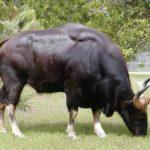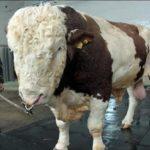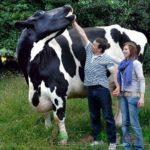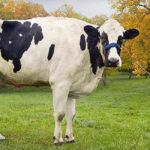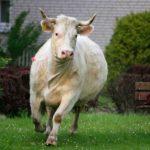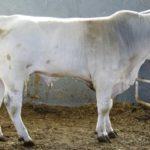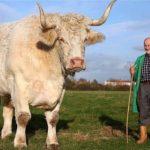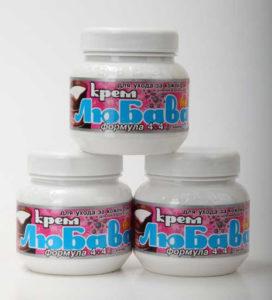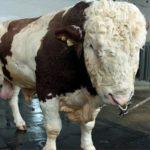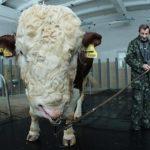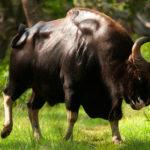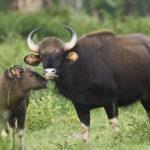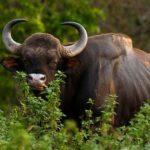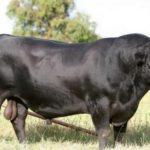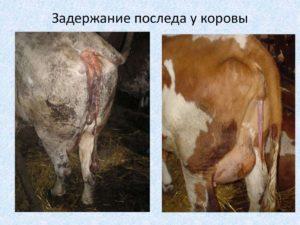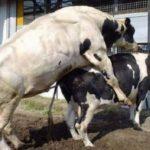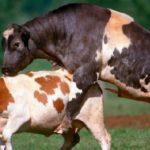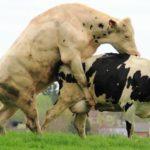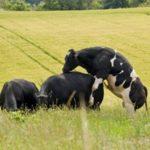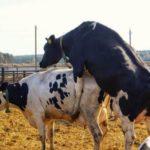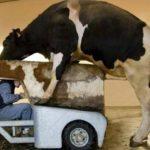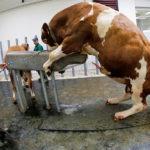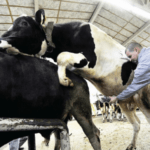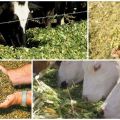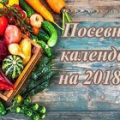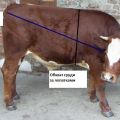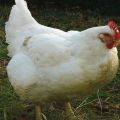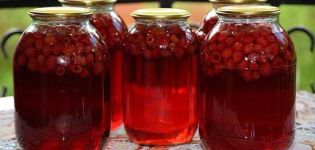Feeding and keeping of inseminating bulls, use and giants
To increase the productivity of livestock in farms, pedigree work is carried out. For this purpose, inseminating bulls are used. For the role of producers, the best representatives of the breed are chosen, who have good health, high libido, and also have impressive sizes. It is important to provide quality care and adequate feeding of animals.
Origin of producers
The first attempts at selection selection have a long history of development. Quite quickly, people realized that the productivity of offspring depends not only on the maternal direction. The quality is also influenced by the bull's data. Such animals are appreciated in every household.
For a long time, cattle breeding took place naturally. A breeding bull could cover several hundred cows within a year. This method incapacitated even the most hardy animals. The turning point was the period in the middle of the 20th century.
Largest examples of inseminating bulls
Bulls are powerful animals, obtained as a result of centuries of selection. Weight of 1 ton is an average indicator for breeding cattle, and this is not the limit for animals. Some specimens with their size and mass stand out even against the background of their huge counterparts.
Porcelain bulls
The largest are the porcelain bulls. The genes of Podolsk cows influenced the impressive dimensions of the animals. As a result, real giants were obtained. The record holder is considered a bull from Switzerland named Donneto. With a height of 1.9 meters, the weight of the animal is 1.7 tons.
Trigger
Another member of the unofficial rating of giants is the Trigger bull, originally from the UK. The representative of the Freesian breed weighs 1.2 tons, and the animal reaches a height of almost 2 meters. And although the animal is not aggressive and has a calm disposition, its horns were cut down. This measure is intended to ensure the safety of tourists who like to be photographed with the strong man in the background.
Field Marshal of the Sherole breed
The bull Field Marshal is called the pride of England. A magnificent specimen of the Sherole breed every year adds 150 kilograms in weight and has already exceeded the mark of 1.5 tons. The frightening appearance does not frighten the owner, who considers the giant to be a calm and peaceful animal and even left him horns.
Repp
The Repp bull from Ukraine is known not only for its impressive weight (1.5 tons). About 50 thousand healthy calves are obtained as a result of using the seed of the producer per year. This giant is extremely aggressive and vindictive. And even cut off horns do not guarantee safety when dealing with an animal.
Gauras
Gauras are wild bulls that live in southeastern Asia. Weighing 1.6 tons in height, they often reach almost 3 meters. Unbridled disposition and remarkable strength scare away other predators from animals. Only crocodiles and tigers can resist the giants. But fighting skills do not protect animals from poachers. Recently, the population of Gaura bulls has decreased to 20 thousand individuals. The breed of animals is listed in the Red Book.
Selection principles
To improve the breed, breeders take as a basis the properties of male producers. Key factors for choosing insemination bulls:
- Pedigree of a breeding animal.
- Features of development from birth to 12 months of age. The rate of muscle building of the animal and the exterior of the young are evaluated.
- Semen quality check. Several dozen of the opposite sex are fertilized with the seed of one-year-old gobies. Less than half of all pregnancies are considered unsatisfactory.
The success of breeding work also depends on the conditions of keeping inseminating bulls.
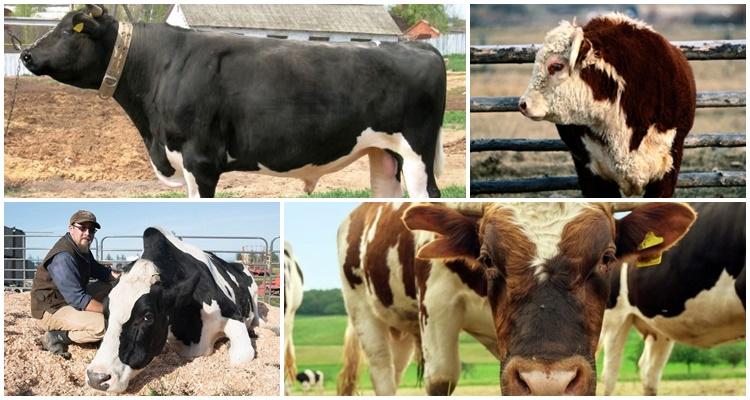
Conditions of detention
To obtain the qualitative characteristics of the offspring, the rules for keeping animals are observed:
- Inseminating bulls are provided with an active lifestyle. The walks shouldn't be short. Animals need at least 3 hours for walking and additional loads.
- Take into account the temperament of the bulls. If the farm does not practice complete isolation of producers, then the contact of calm animals with unbalanced ones is limited.
- They follow the rules of hygiene. All body parts of bulls, including hooves and genitals, are washed daily.
- They also regularly keep the pen clean.
- Inseminating bulls are kept only in spacious, ventilated and bright rooms. Lack of comfort negatively affects the psyche of giants and reduces sperm quality.
- The animals are kept on a chain; the rope leash is not strong enough.
The mode of each inseminating bull consists of several points:
- 3 meals a day.
- Rest after each feeding session.
- Walk and work in the middle of the day.
- With natural fertilization - evening mating.
Violation of the usual daily routine or poor housing conditions affect the reproductive ability of the animal.
Diet
The productivity of inseminating bulls depends on the quality of the food. Lack or overabundance of nutrients adversely affects the condition of the animal's sperm.
The consequences of a feeding failure are sometimes eliminated within 2 months.
The menu includes various products that ensure the normal development of animals:
| Food | Share in the daily diet,% |
| Barley or oats | 25 |
| Sunflower or soybean meal | 20 |
| Corn (required in chopped form) | 16 |
| Bran | 15 |
| Molasses or sugar | 10 |
| Yeast | 5 |
| Recycled fish waste | 5 |
| Salt and phosphates | 2 |
| Vitamin Supplements | 1 |
Salt is very important for inseminating bulls. This product replenishes mineral deficiencies in animals. It is given in the form of a lick or added to the composition of the combined feed.

Bulls are also provided with adequate amounts of vitamins. The shortage leads to dire consequences:
| Types of vitamins | Required amount | The result of insufficient use |
| A, mg | 650 | Growth retardation and atrophy of the genital organs of the animal |
| E, mg | 365 | Disruptions in metabolic processes of the body, pathology of the limbs of the animal |
| D, ME | 14000 | Degeneration of muscle tissues of the skeleton and heart of the animal |
The inseminating bulls are fed 3 times a day. The main meal, about 70% of the daily diet, is at lunchtime. The leftovers are evenly distributed between morning and evening feedings.
Insemination
Farms use 3 methods of insemination of animals - natural, machine and artificial insemination.
Natural on the run
The inseminating bull is released to graze along with the rest of the livestock. The animal covers cows that have reached the peak of sexual arousal.
The natural range method is suitable for small private farms.
Machine tool
For mating, a special machine is purchased, on which the bull puts its front legs. Then the cows that have reached puberty are brought to the animal.
Artificial insemination
With artificial insemination, the semen of the sire bulls is collected in advance. For storage, hermetically sealed containers are used, which are placed in liquid nitrogen.
The use of artificial insemination of animals has a positive effect on the indicators of economic activity. The success of breeding work depends on the comprehensive use of all recommendations. Comfortable conditions for keeping animals, a balanced diet preserve the health of animals, lead to an increase in the number of livestock and the preservation of the breed.
